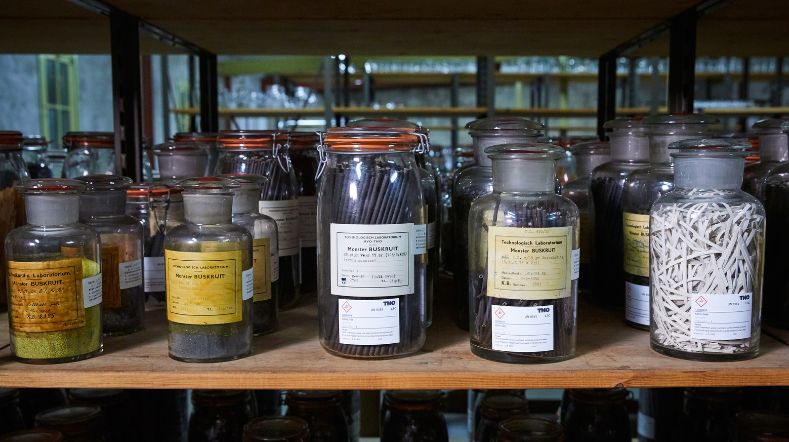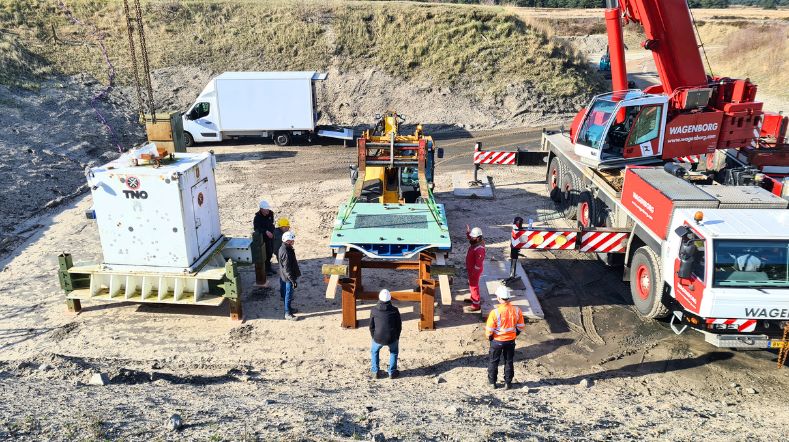Naval ship vulnerability and protection
The ability of naval vessels to survive and remain operational after being attacked is of paramount importance to their operators and crew. For the military, a well-designed vessel should be able to withstand an attack, stay afloat and in control, as well as retain the ability to defend itself.
For many years, ships were largely designed to withstand conventional threats from missiles, shellfire, mines and torpedoes. More recently, however, supersonic and hypersonic missiles have been proliferating, presenting new challenges and risks.
That is why TNO has been assisting MoD’s and other naval clients and partners for over 40 years and developed several highly efficient models to assess the vulnerability of military vessels, develop mitigating measures and increase their survivability. Blast resistant doors and innovative bulk heads have been developed, as well as tools for damage control and to restore the vessel to operational readiness as quickly as possible.

Naval vessel protection and threats
Vessels may suffer additional damage due to other above-water threats, which may lead to operational mutilation, structural damage, fire, and flooding. Underwater explosions meanwhile cause high pressures, shock induced loads, hydrodynamic forces, and possibly devastating water jets. Over the past few decades, the increasing risk of terrorism has added to these threats in more unpredictable ways. Improvised explosive devices and rocket-propelled grenades represent effective ‘cheap kills’.
Survivability and damage control
TNO plays a leading part in the development and application of innovative models and tools that aim to reduce the vulnerability of naval ships and improve damage control after attack. Survivability can be increased in many ways. Structural ship elements can be designed to minimise the transmission of loads for sensitive areas, equipment installed on shock mounts, and key areas protected by installing blast- and fragment-resistant doors and bulkheads.
Where lightweight or reduced signatures are essential, we can use composite materials that come with their own particular design challenges. TNO has developed unique failure prediction tools for both steel and composite structures used in naval ships.
Expertise in design and evaluation
TNO’s expertise can be instrumental in the early design stages as well as the evaluation of vessel that is ready to launch or has already been commissioned. The measures we recommend aim to mitigate the impact of any calamity and restore the vessel to operational readiness as quickly and as fully as possible. Reduced susceptibility to weapon strike can be designed into the vessel, for example, and automated restoration measures implemented.
Escalation reduction measures after a calamity are another option, whether built into the design, in the form of automated escalation reduction, and/or through human intervention. Or the required functionality can be restored by human intervention . In any case, devoting more attention to protection during the early stages of design may help avoid substantial cost and weight penalties at a later stage. The specific expertises you can find with us are:
Facilities for full scale testing
TNO supports outdoor full scale testing and has a unique well-equipped laboratory to test naval equipment against various shock loadings. One of TNO’s strengths is the fact that we merge theoretical research, numerical simulation and testing, both on site and in our laboratories. In full scale shock trials, for instance, we typically record hundreds of acceleration and pressure signals to monitor the response of a ship.
In addition to testing ships, this enables us to validate and extend our sophisticated proprietary simulation tools. With decades of experience in testing and certification and our expertise in the field of international standards and legislation, we can deploy our laboratory shock-testing equipment to expose materiel, structures and ship systems to impact and shocks according to internationally recognized standards, ensuring that ships comply with and even exceed every possible naval requirement and are eminently fit for purpose.
International partnerships
TNO is an attractive partner for small and large-scale research or testing projects. We are a close partner of the Netherlands Ministry of Defence (MoD), defence industry and NATO partners. As an independent research organisation we also offer services to other MoD’s and the international defence industry.
TNO is a partner for both small and large-scale research or testing projects. We work closely with the Netherlands Ministry of Defence (MoD) and NTAO partners. As an independent research organisation we also offer services to other MoD’s and the international defence industry. TNO helps her partners and clients to keep naval assets safe and ready to deploy at any time, anywhere.
Get inspired
Why continuous knowledge development is crucial in munitions safety


TNO’s Unit Defence, Safety & Security strengthens ties with South Korea


How the use of passive radars and satellite signals can detect and identify aerial threats


Responsible for safety: the crucial role of the range operator in bulletproof protection


Is the race between protection and weight of Defence vehicles changing?


